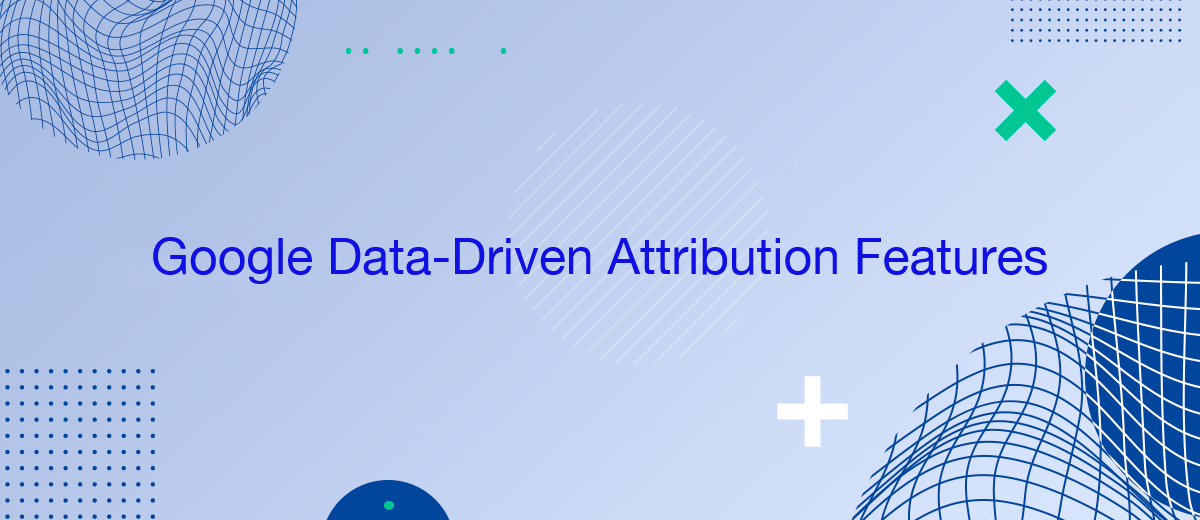Knowing how various touchpoints affect a customer's journey is crucial in the ever-changing world of digital marketing. Herein lies the application of data-driven attribution. The newest features that Google has released will be discussed in this post, which will transform the way marketers view and use data for attribution.
Evolution of Google Data-Driven Attribution
Historical Overview
As we follow the development of digital attribution throughout time, we see a transition from simple models to more complex methods. The progression signifies an ongoing endeavor to achieve precision and pertinence in comprehending user interactions. This tour lays the groundwork for examining the most recent data-driven attribution capabilities from Google and how they are revolutionizing contemporary marketing tactics.
Previous Attribution Models
In the context of Michigan Digital Marketing Services, earlier attribution models frequently ignored the complexities of customer journeys in favor of oversimplified methodologies. More sophisticated and flexible solutions, such as Google's data-driven attribution features, were required because these antiquated methods were unable to offer a thorough insight.
Limitations Addressed by Google's Features
Google's data-driven attribution tools address long-standing issues by utilizing cutting-edge machine learning methods. They provide marketers with a complete solution that precisely assigns value to various touchpoints in the customer journey, overcoming the obstacles of oversimplification and lack of adaptability.
Key Features of Google's Data-Driven Attribution
Advanced Machine Learning Algorithms
Advanced Machine Learning Algorithms allow systems to learn and adapt from data on their own without explicit programming by utilizing complex mathematical models to generate predictions and judgments. Modern technology is built on these algorithms, which propel advances in a wide range of fields with unmatched accuracy.
Cross-Channel Attribution
A sophisticated marketing analytics technique called "cross-channel attribution" assesses and assigns value to different interactions through a variety of channels. With the comprehensive understanding of consumer interactions that this approach gives marketers, decision-making across a range of marketing platforms is made easier and more intelligently.
Real-Time Insights
Marketers may obtain dynamic statistics instantly with Real-Time Insights in Google's data-driven attribution system. This real-time data facilitates prompt and well-informed decision-making by giving agile and successful digital marketing strategies a live pulse on user behavior and campaign performance.
Implementation Process

Setting Up Data-Driven Attribution
Configuring settings, specifying conversion objectives, and linking the program with Google Analytics are all part of setting up Data-Driven Attribution. Through this tactical approach, marketers are able to leverage cutting-edge machine learning algorithms, guaranteeing precise and perceptive attribution at every stage of the customer experience.
Integration with Google Analytics
The key to making the most of Google's data-driven attribution services is integration with Google Analytics. Marketers can make deft decisions based on real-time data and analytics insights thanks to this seamless connectivity, which guarantees a single and comprehensive picture of performance measures.
Customization Options
Customization possibilities enable marketers to adapt the system to their own requirements in the field of data-driven attribution. This flexibility ensures a personalized approach, improving the efficacy and relevance of the analytical process, from building attribution models to selecting timeframes.
Benefits for Marketers
Enhanced Decision-Making
Google's data-driven attribution features are characterized by improved decision-making. By utilizing cutting-edge machine learning algorithms, marketers are able to obtain deep insights that help them make well-informed, strategic decisions that smoothly mesh with user behavior, eventually increasing the efficacy of their campaigns.
Improved ROI
Google's new data-driven attribution features have improved ROI as its price. Today, marketers are able to identify high-impact touchpoints and allocate resources with surgical precision. Campaign performance is raised to unprecedented levels as a result, yielding a noticeable and significant improvement in return on investment.
Better Knowledge of the Client
Marketers have access to unmatched insights into consumer behavior thanks to Google's data-driven attribution tools. Businesses can better understand their audience by studying touch points across media. This allows them to develop customized strategies that connect with them more deeply.
Challenges and Criticisms
Privacy Concerns with Data
As with any data-centric strategy, privacy issues come up. Marketers have to walk a tightrope between gathering insightful data and protecting user privacy. Google uses strong privacy measures to address these issues.
User Learning Curve
For certain marketers, switching to a data-driven attribution strategy may present a learning curve. To guarantee that customers can take full advantage of the capabilities, Google offers extensive training materials.
Possible Over Dependence
Despite its strength, data-driven attribution has a risk of being overused. Marketers need to find a middle ground by combining data-driven insights with thoughtful human judgment.
Real-Life Success Stories
Study Case 1: X Company


When Company X started using Google's data-driven attribution, conversions increased by 30%. Their marketing approach was revolutionized by their capacity to recognize and rank high-impact touchpoints.
Agency Y, Case Study No. 2
Agency Y, which manages a variety of clientele, reported a notable decrease in marketing expenditures along with a commensurate rise in conversion rates. They were able to precisely optimize ad spend thanks to Google's features.
Future Trends in Data-Driven Attribution
Prospected Advancements
The field of data-driven attribution is constantly changing. Improved AI capabilities, deeper interaction with upcoming technologies, and an easier-to-use user interface are among the anticipated enhancements.
Industry Forecasts
Industry-wide adoption of data-driven attribution is anticipated by experts. More companies of all sizes will use these features as technology advances in order to maintain their competitiveness in the digital market.
Comparison with Other Attribution Models
Advantages and Drawbacks
Consider the benefits and drawbacks of data-driven attribution, even though it provides unmatched insights. Marketing professionals can make well-informed decisions by comparing their strategies with those of alternative attribution models, such as last-click and first-click.
The Appropriate Model Selection
An all-encompassing solution does not exist. The target demographic, industry specifics, and business objectives of marketers must all be taken into account when choosing an attribution model. The choice ultimately comes down to personal preferences, but Google's data-driven attribution services offer a tempting alternative.
User Tips for Maximizing Benefits

Frequent Updates and Training
In light of the ever-changing digital landscape, ongoing training is essential. To take full advantage of Google's services, marketers need to stay up to date on upgrades and enhancements.
Making Use of Additional Tools on Google
Data-driven attribution offers additional benefits when combined with other Google technologies. For a thorough analytical approach, marketers might investigate integrations with Google Ads, Google Tag Manager, and other platforms.
Working together with Marketing Teams
Cross-marketing team coordination is necessary for effective execution. Successful use requires coordinating tactics, exchanging findings, and cultivating an organization-wide data-driven culture.
Common Misconceptions
Myth 1: Large Budgets Only Allow for Data-Driven Attribution
Businesses of all sizes can profit from data-driven attribution, despite popular opinion. Google's features are available to both startups and large companies due to their scalability.
Lie 2: Data-driven attribution takes the Place of Human Decision-Making
Data-driven attribution is an aid, not a substitute for human judgment. To get the best outcomes, successful marketers mix data insights with strategic decision-making.
Dispelling Further Fallacies
Data-driven attribution is misunderstood in several ways. Dispelling these fallacies is essential for encouraging widespread adoption, as it addresses issues related to implementation and complexity.
Expert Opinions
Perspectives from Sector Experts
Prominent personalities within the marketing sector convey hope regarding the revolutionary effects of data-driven attribution. Their observations provide light on how attribution is changing as a tool for developing marketing strategy.
Suggestions for Put into Practice
Experts advise implementing changes gradually. A smooth transition and maximum benefits are ensured by beginning with a pilot project, continuously monitoring results, and progressively expanding usage.
How to Stay Updated
Official Google Resources
It's crucial to keep informed. For marketers seeking to stay current on the newest trends and optimal techniques, Google offers an abundance of resources like webinars, tutorials, and documentation.
Local Conversations and Forums
Collaborative learning is facilitated by community engagement. To share knowledge and remain on top of trends, marketers can take part in industry gatherings, forums, and conversations.
Conclusion
To sum up, Google's cutting-edge data-driven attribution tools represent a huge advancement in the field of digital marketing. Thanks to sophisticated machine learning, cross-channel attribution, and real-time analytics, marketers can now make accurate decisions with greater power. Accepting this change paves the way for a dynamic and data-driven future in the always changing field of digital advertising, as well as increased return on investment and customer comprehension.
What do you do with the data you get from Facebook lead forms? Do you send them to the manager, add them to mailing services, transfer them to the CRM system, use them to implement feedback? Automate all of these processes with the SaveMyLeads online connector. Create integrations so that new Facebook leads are automatically transferred to instant messengers, mailing services, task managers and other tools. Save yourself and your company's employees from routine work.
